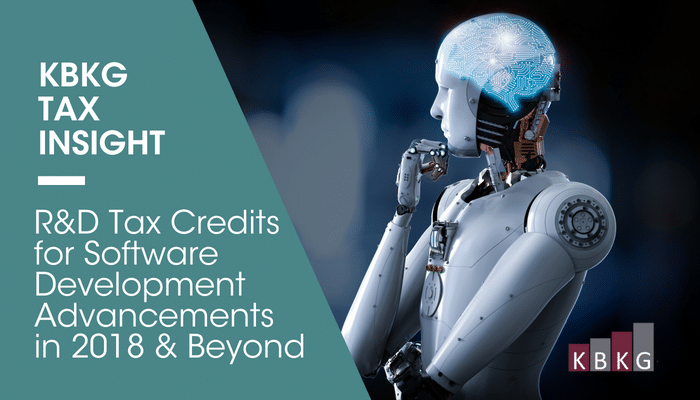Throughout the years, software has found itself into every facet of our lives. From smart phones to smart televisions; many homes are now finding themselves labeled as smart. As the software industry has grown, so too has its piece of the pie as it relates to the Section 41 credit for increasing research activities (the “R&D Credit”). Companies engaged in the development of brand-new software or the improvement of existing software can recognize a dollar-for-dollar reduction in the federal and, potentially, state tax liabilities.
Though the past decade has seen remarkable advancements in the software industry, 2018 is expected to raise the bar even higher.
Here are a few of the most significant innovative software development advancements of 2018:
Artificial Intelligence (AI). Various businesses are automating their processes using AI. Manufacturing plants have incorporated robotics using AI in their production lines. Others are implementing voice-activated home assistants. Smartphones are using AI to determine preferences and customizing experiences for the individual user. Data scientists use AI to analyze large sets of data in a fraction of the time it used to take just a few years ago and with much greater accuracy. AI has the potential to transform nearly every industry.
Internet of Things (IoT). It started with the wearables like Android Wear, Apple Watch and Fitbit. IoT is the technology of connecting devices for exchanging data. We have connectivity to the internet through devices we never thought possible 20 years ago. We already can check voicemails and emails from smart watches, browse the internet and check social media on our refrigerators, and view just about anything we can imagine on our smart TVs. Soon, communication devices, driverless cars and business processes will always be connected and enormous amounts of data will be created, stored and shared. There will be a huge demand for software developers focusing on developing applications to control various devices at anytime from anywhere.
Progressive Web Apps (PWAs). These are web applications that are regular web pages, but look, feel and function like the native applications to the user. The development of progressive web apps will grow in 2018 and will be in line with the mobile app development. Businesses involved with banking, healthcare, e-commerce, and entertainment are developing various apps to provide better accessibility and user experience to the consumer.
Mixed Reality (MR). This technology involves combining real objects and virtual reality to provide the user a more realistic experience. Though the U.S. Air Force first experimented with this technology in the 1990’s, it has advanced to provide more realistic environments for gamers, training simulators, etc. In 2018, various businesses are focusing on enhancing the user experience by combining reality and virtual reality. Companies are integrating MR technology on a large scale with newly-created web and mobile apps whereby customers virtually interact with products or services. This has the potential to significantly change the way a business markets and sells to its customers.
Blockchain. This software involves a continuously-growing list of records, called “blocks” and are secured using cryptography. These blocks are designed to be permanent, making them ideal for recording events, maintaining medical records, contracts between parties, preventing identity theft, credit reporting, fraud protection and voting monitoring. Many believe that this technology will revolutionize almost every industry. The technology provides for the absence of central computers as well as clear locations of data storage. Already adopted by the financial services industry, this technology is expected to be widely-adopted by various business, creating a large demand for blockchain developers.
2018 will be a gold rush for developers who devote themselves to the software development trends mentioned above. Along with the reduction of corporate and individual tax rates introduced by the Tax Cuts and Jobs Act1, KBKG expects to see growth in R&D expenditures for existing software companies as well as a significant increase in the number of newly-formed startups. We anticipate many of these companies will avail themselves of the R&D tax credits due to the recent law changes.
Interested in learning more? Our technical experts cover this information and more during our R&D Tax Credits for the Software Development Industry webinar. View our course calendar and register for free »
Author: Tetyana Guguchkina
Download Article: R&D Tax Credits for Software Development Advancements in 2018 & Beyond
1H.R. 1/P.L. 115-97, “An Act to provide for reconciliation pursuant to titles II and V of the concurrent resolution on the budget for fiscal year 2018.”


